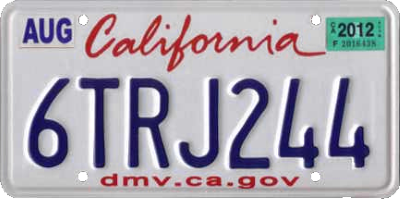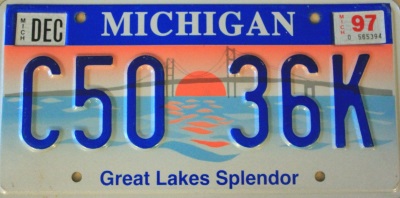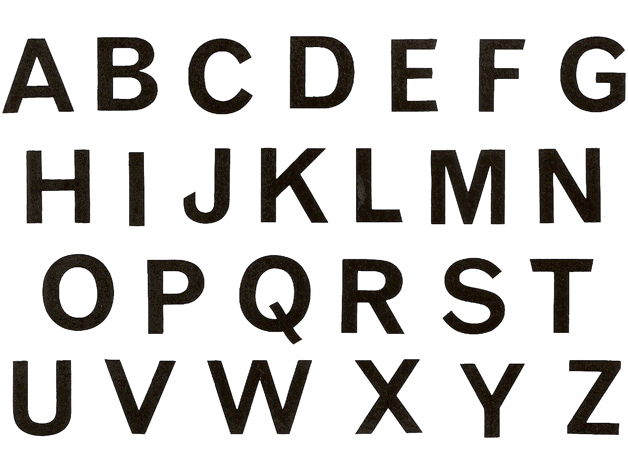The Military Alphabet, also known as the NATO phonetic alphabet, has been in use since 1927 as a way of effectively and clearly communicating critical information.
There are many reasons why the military uses the phonetic alphabet, including:
- Radio transmissions can be heavily garbled
- Many letters sound exactly the same. For example, P sounds like T, V, and B.
- During combat, there can be all sorts of loud noises going on around you. This can make it extremely difficult to understand the message that’s trying to be relayed.
Related Article – Military Terms/Slang
Below you will find several resources on the Military Alphabet, including playable sound-clips for each letter, a printable PDF chart, flashcards to help you practice at home, and a quiz to test your military alphabet knowledge.
If you have any questions at all, feel free to reach out to us using the following contact form.
Here’s a helpful table outlining each letter in the military alphabet and its pronunciation.
| Letter | Word | Pronunciation | Play |
|---|---|---|---|
| A | "Alpha" | AL fah | |
| B | "Bravo" | BRAH voh | |
| C | "Charlie" | Char lee | |
| D | "Delta" | Del tah | |
| E | "Echo" | Eck oh | |
| F | "Foxtrot" | Focks trot | |
| G | "Golf" | Golf | |
| H | "Hotel" | Ho tell | |
| I | "India" | In dee ah | |
| J | "Juliet" | Jew lee ett | |
| K | "Kilo" | Key loh | |
| L | "Lima" | Lee mah | |
| M | "Mike" | Mike | |
| N | "November" | Noh vem ber | |
| O | "Oscar" | Oss car | |
| P | "Papa" | Pah Pah | |
| Q | "Quebec" | Keh beck | |
| R | "Romeo" | Row me oh | |
| S | "Sierra" | See air ah | |
| T | "Tango" | Tang oh | |
| U | "Uniform" | You nee form | |
| V | "Victor" | Vik ter | |
| W | "Whiskey" | Wiss key | |
| X | "X-Ray" | Eks ray | |
| Y | "Yankee" | Yang kee | |
| Z | "Zulu" | zoo loo |
Additionally, numbers in the military alphabet are pronounced differently.
Here’s a quick chart demonstrating how numbers are pronounced using the phonetic alphabet:
| Number | Code Word | Phonetic Pronunciation |
|---|---|---|
| 0 | Zero | ZEE-RO |
| 1 | One | WUN |
| 2 | Two | TOO |
| 3 | Three | TREE |
| 4 | Four | FOW-ER |
| 5 | Five | FIFE |
| 6 | Six | SIX |
| 7 | Seven | SEV-EN |
| 8 | Eight | AIT |
| 9 | Nine | NIN-ER |
| 100 | Hundred | HUN-DRED |
| 1000 | Thousand | TOU-SAND |
3 Easy Ways To Learn The Military Alphabet
At first thought, learning the military alphabet might seem a bit intimidating.
One would say, it’s almost like learning a new language.
The simple truth is, with a little bit of practice, you’ll quickly find it’s a lot easier than you might have originally thought.
The very first thing you need to do is commit to memorizing them.
One of the best ways to do this is to simply write down the phrase over and over.
This is a simple hack that has been proven in study after study at helping people memorize items quickly and effectively.
Related Article – Army Radio And Communications Security Repair (MOS 94E)
Click Here for a printable PDF chart of the Military Alphabet.
Another very effective way to memorize military letters is to use flashcards.
Flashcards are simply the question on one side of a piece of paper, and the answer on another.
You can either use them by yourself or have a friend or sibling help you out.
Click Here for a free printable Military Alphabet flashcards to help you practice at home.
Lastly, you should focus on trying to learn the alphabet in the afternoon.
Countless studies have proven that we have a tendency to learn things better in the afternoon, as well as retain the information we learned.
Testing Your Knowledge
Once you feel you have a decent amount of the military alphabet committed to memory, now it’s time to test out your skills on the road.
Literally…
One popular way to do this is to recite license plate numbers while you’re out driving.
Simply look at the license plate number, and recite the phonetic pronunciation.
Related Article – Army Radio Operator (MOS 25C)
Try this one out:

This would be pronounced like this:
Six-Tango-Romeo-Juliet-Too-Fow-Er-Fow-Er
Or how about this one:

This would be pronounced like this:
Charlie-Fife-Zero-Tree-Six-Kilo
Once you feel comfortable enough, check out the quiz below.
Military Alphabet Quiz
Take our quiz below to test your knowledge:
Related Article – Air Force Radio Frequency Transmission Systems (3D1X3): Career Details
Here’s A Full List Of Common Military Alphabet Phrases:
Whiskey-Tango-Foxtrot: “WTF?”
Charlie-Tango-Foxtrot: Same as above, often used as a substitute for reasons unknown.
Lima-Charlie: Stands for “loud and clear.”
Charlie-Mike: Continue the mission.
Bravo-Zulu: Job well done.
Oscar-Mike: On the move.
Tango-Yankee: Thank you.
Romeo-Foxtrot: Run like hell, or get the hell out of there!
Bravo-Foxtrot: Buddy f$%ker, or someone who leaves their fellow soldier behind when the going gets rough.
40-Mike-Mike: Standard abbreviation for 40 mm, which is a grenade launcher.
Alpha-Mike-Foxtrot: Adios Mother F$%ker. Used both in the field when terminating an enemy, and in friendly conversation when a friend is leaving the barracks.
If you can think of any others that aren’t on this list, feel free to comment below!
Related Article – Interior Communications Electrician (IC): Career Details
Common Questions
How would you spell the word “no” over a walkie-talkie in the US Military?
Technically speaking, you would say it like this: “November Oscar.”
However, the general consensus is that instead of using the military phonetic alphabet, you would simply say “no,” “nope,” or “negative.”
Sometimes the simplest answer is the correct one.
Military Vs. Police Phonetic Alphabet – Is There A Difference?
The military and police departments use the exact same phonetic alphabet. The only major difference is that police departments use what are called 10-codes, which are simple abbreviations for situations they may find themselves in.
What does Charlie Tango Foxtrot mean?
The term “Charlie Tango Foxtrot” in the military alphabet is another way to say, “What the f*ck?”
Why do they still use the military alphabet?
Because background noise, poor connections, and the similarity of the sounds of different letters, the military alphabet provides a clear and easy to understand system for communication.
What is Oscar Tango Mike?
Using the military alphabet, “Oscar Tango Mike” is a clear sign for “on the move.”
Why do soldiers say Tango Down?
When using the military alphabet, Tango for T is also short for “target.” So, the phrase “Tango down” means “target down” or “enemy down.”
When did soldiers start using the military alphabet?
The first “signal” spelling was used in the U.S. Navy with flags, and the Navy published its first radio phonetic alphabet in 1913. Since then, the system has changed and been adapted for air and international use.
- Ikon Pass Military Discount: Learn How To Save Big - January 31, 2025
- RTIC Military Discount: Find Out How To Save Big on Gear - January 30, 2025
- Traeger Military Discount: Learn How To Save Big on Smokers - January 28, 2025





